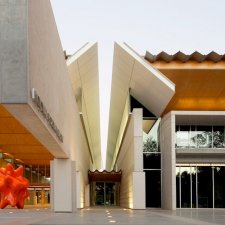The most commonly asked question, I think, of people who aren’t in jazz or are not really conversant with jazz is: what is jazz? It’s a question you’re asked so many times and so often by so many people that it almost demands an answer, even if I really in my heart feel it doesn’t deserve one. By that I mean that it’s such an intangible – it’s only a word, jazz is only a word.
Summing it up, I think the quote I made to The New York Times in 1972 and which seemed to get a good deal of attention, is as good now as it was then. And that is, I said to them ‘Jazz is not a “what” (in inverted commas), it’s a “how” (in inverted commas)’. It’s how you do something, it’s not a cut and dried affair. And even with this jazz studies program at the Conservatorium, which people may be forgiven for mistakenly thinking that they’re going to go there and learn how to play jazz, that’s not totally so. Because if you’re not born to play jazz, nobody can teach you to play it. All we do there, hopefully, is assist them in their development, maybe save them years and give them the benefit of our years of experience in it, but hopefully to mould them to do it their way, not our way, because that’s the big thing jazz is, it’s a person’s personality and his way of expressing through music, it’s not perpetuating something that was written centuries ago, on the contrary, it’s happening right now, and right at this minute it’s changing constantly.
There are idioms, there are pockets of jazz, there are sort of schools of thought in jazz, there is Dixieland music, there is bebop, but each of these were developmental areas of jazz, stages of jazz.













